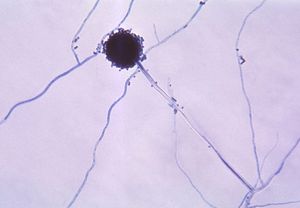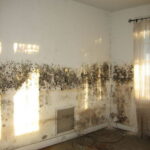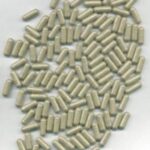Spores are akin to microscopic fungus seeds that are so small they can easily become airborne and inhaled. Anyone who has ever stomped on a puffball mushroom has probably seen the cloud of fungal spores that explode into the air around it.
Spores of fungi are everywhere, they cannot be avoided. There are even millions of spores, mainly from Aspergillus fungi, in the pillow on which you rest your head every night.
Is Mold Dangerous?
Although fungal spores are found throughout the environment, for most people, these molds don’t pose a health problem. Very few species of fungi are true pathogens that aggressively cause disease in humans, and the opportunistic fungi that are able to cause disease in the immune compromised are not normally a threat to healthy individuals. Molds can, however, trigger an allergic reaction in those who are sensitive.
What is a Mold Allergy?
Allergies occur when the body overreacts to a perceived threat, launching an immune response against something that normally is not harmful. For those with respiratory allergies to mold, the reaction is in response against spores that are ingested or inhaled.
Respiratory Allergies to Mold
People who have respiratory allergies year-round may have an immune sensitivity to mold, household dust mites or indoor pets. Mold allergies are typically most severe during warm, wet weather and from mid to late summer. Whereas dust mite and pet dander allergies are often consistently miserable regardless of the season.
Food Allergies to Mold
Mold allergies can also be triggered by eating food that contains fungus. Some food items most commonly associated with fungus include: mushrooms (which are fungus), cheese, vinegar, soy sauce, soured dairy products like sour cream, dried fruits, breads and other foods made with yeast, hot dogs, old pickled or smoked meat or fish, as well as canned juice.
Which Molds Cause Allergies?
Although molds mainly thrive in damp, dark environments, their spores can be found everywhere, both indoors and out. There are many different types of mold, but only a few commonly cause allergies. Mold allergies can be very specific. A person may be allergic to just one type of mold, or to a wide range of molds. The molds that most commonly cause allergies include Alternaria, Cladosporium (Hormodendrum), Aspergillus, Penicillium, Helmin thosporium, Epicoccum, Fusarium, Mucor, Rhizopus and Aureobasidium (Pullularia).
To learn more about allergies to mold and mildew, see the Suite101 articles:
Mold Allergy: Symptoms and Treatment
Mold Allergy: Reducing the Severity of Mold Allergies
Sources
Mayo Clinic (June) Mold Allergy.
Asthma and Allergy Foundation of America (2005) Mold Allergy.
Huang, Shih-Wen (2009), Mold Allergies, MDeMedicine from MDWeb.
WebMD (2009) Mold Allergy.
Please note: The information in this article is not to be followed as medical advice, diagnosis or treatment. Please consult with your physician or primary health practitioner for information regarding your own personal health and necessary treatments.
This article originally appeared in Suite101 online magazine.





